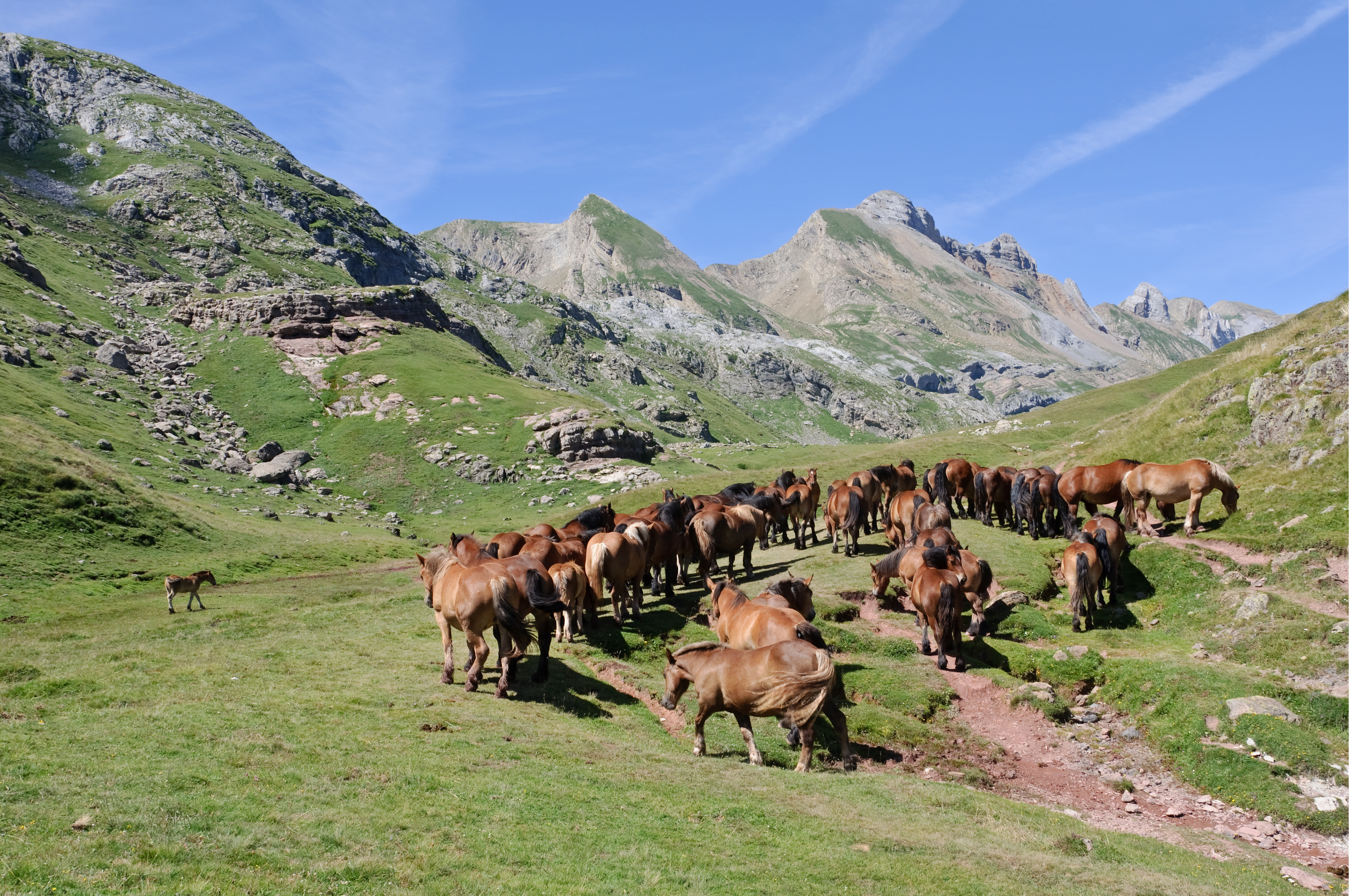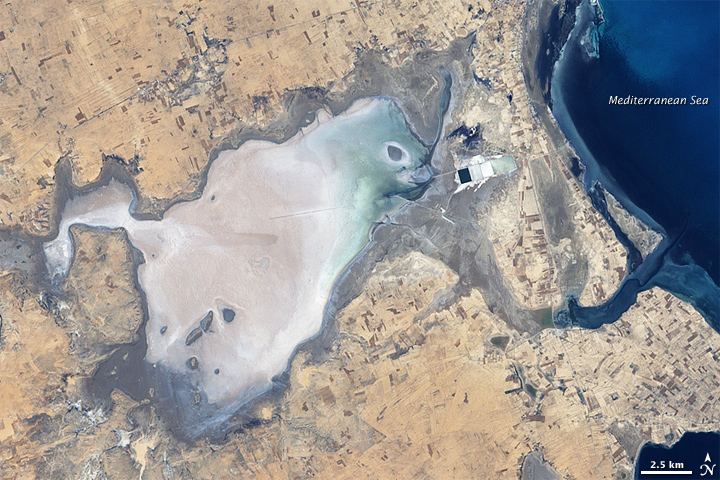|
Aïn El Turk
Ain el-Turck (Arabic : عين الترك ) (literally "Fountain of the Turks") is the capital of Ain el-Turck District located about fifteen kilometers from Oran in the north-west of Algeria. The district contains nine municipalities. It now host an important seaside resort. It also gives its name to one of the beaches in the region of Oran. History Centuries ago, Ain el Turk was a plain called El Eurfa which extends from ''St Roch'' till ''Les Andalouses''. Over the centuries, the population of El Eurfa plain (known later as Ain el Turck) has significantly increased. Two types of people lived there and cohabited, nomadic people who practice transhumance, and sedentary or sedentarized tribes who practiced agriculture and beekeeping. The nomads wandered between the plains of E''l Eurfa, Boutlelis'' and ''Messreghinn'', except in some special cases they did not go beyond the Sabkha in the South and the forest Madagh in the West. They lived together and traded with each other. T ... [...More Info...] [...Related Items...] OR: [Wikipedia] [Google] [Baidu] |
Algeria
) , image_map = Algeria (centered orthographic projection).svg , map_caption = , image_map2 = , capital = Algiers , coordinates = , largest_city = capital , religion = , official_languages = , languages_type = Other languages , languages = Algerian Arabic (Darja) French , ethnic_groups = , demonym = Algerian , government_type = Unitary semi-presidential republic , leader_title1 = President , leader_name1 = Abdelmadjid Tebboune , leader_title2 = Prime Minister , leader_name2 = Aymen Benabderrahmane , leader_title3 = Council President , leader_name3 = Salah Goudjil , leader_title4 = Assembly President , leader_name4 = Ibrahim Boughali , legislature = Parliament , upper_house = Council of the Nation , lower_house ... [...More Info...] [...Related Items...] OR: [Wikipedia] [Google] [Baidu] |
Oran Province
Oran Province ( ar, ولاية وهران, ) is a province (''wilayah'') in Algeria whose seat is the city of the same name. Geography It is located in the northwestern part of the country. Its population is 1,584,607 and it covers a total area of 2,114 km². The province is bordered to the east by Mostaganem, to the southeast by Mascara, to the southwest by Sidi Bel Abbes, and to the west by Aïn Témouchent Province. History The province was formed from the former French department of Oran, which was maintained after independence and was transformed into a ''wilaya'' (province) by the ordnance of 1968. It inherited its current structure after the re-organization of 1974, when it lost its western and southern parts in favor of the creation of Sidi Bel Abbès Province. Administrative divisions As of 1984, the province is divided into 9 districts (''daïras''), which are further divided into 26 ''communes'' or municipalities. Districts # Aïn El Turk # Arzew # Bethiou ... [...More Info...] [...Related Items...] OR: [Wikipedia] [Google] [Baidu] |
Aïn El Turk District
Aïn El Turk is a district in Oran Province, Algeria, on the Mediterranean Sea. It was named after its capital, Aïn El Turk. Municipalities The district is further divided into 4 municipalities: * Aïn El Turk *Mers El Kébir Mers El Kébir ( ar, المرسى الكبير, translit=al-Marsā al-Kabīr, lit=The Great Harbor ) is a port on the Mediterranean Sea, near Oran in Oran Province, northwest Algeria. It is famous for the attack on the French fleet in 1940, in t ... * Bousfer * El Ançor Districts of Oran Province {{Oran-geo-stub ... [...More Info...] [...Related Items...] OR: [Wikipedia] [Google] [Baidu] |
Arabic
Arabic (, ' ; , ' or ) is a Semitic languages, Semitic language spoken primarily across the Arab world.Semitic languages: an international handbook / edited by Stefan Weninger; in collaboration with Geoffrey Khan, Michael P. Streck, Janet C. E.Watson; Walter de Gruyter GmbH & Co. KG, Berlin/Boston, 2011. Having emerged in the 1st century, it is named after the Arabs, Arab people; the term "Arab" was initially used to describe those living in the Arabian Peninsula, as perceived by geographers from ancient Greece. Since the 7th century, Arabic has been characterized by diglossia, with an opposition between a standard Prestige (sociolinguistics), prestige language—i.e., Literary Arabic: Modern Standard Arabic (MSA) or Classical Arabic—and diverse vernacular varieties, which serve as First language, mother tongues. Colloquial dialects vary significantly from MSA, impeding mutual intelligibility. MSA is only acquired through formal education and is not spoken natively. It is ... [...More Info...] [...Related Items...] OR: [Wikipedia] [Google] [Baidu] |
Ain El-Turck District
Ain (, ; frp, En) is a department in the Auvergne-Rhône-Alpes region in Eastern France. Named after the Ain river, it is bordered by the Saône and Rhône rivers. Ain is located on the country's eastern edge, on the Swiss border, where it neighbours the cantons of Geneva and Vaud. In 2019, it had a population of 652,432.Populations légales 2019: 01 Ain INSEE Ain is composed of four geographically different areas (, , Bugey and |
Oran
Oran ( ar, وَهران, Wahrān) is a major coastal city located in the north-west of Algeria. It is considered the second most important city of Algeria after the capital Algiers, due to its population and commercial, industrial, and cultural importance. It is west-south-west from Algiers. The total population of the city was 803,329 in 2008, while the metropolitan area has a population of approximately 1,500,000 making it the second-largest city in Algeria. Etymology The word ''Wahran'' comes from the Berber expression ''wa - iharan'' (place of lions). A locally popular legend tells that in the period around AD 900, there were sightings of Barbary lion, Barbary lions in the area. The last two lions were killed on a mountain near Oran, and it became known as ''la montagne des lions'' ("The Mountain of Lions"). Two giant lion statues stand in front of Oran's city hall, symbolizing the city. History Overview During the Roman Empire, a small settlement called ''Unica Colonia'' ... [...More Info...] [...Related Items...] OR: [Wikipedia] [Google] [Baidu] |
Nomadic
A nomad is a member of a community without fixed habitation who regularly moves to and from the same areas. Such groups include hunter-gatherers, pastoral nomads (owning livestock), tinkers and trader nomads. In the twentieth century, the population of nomadic pastoral tribes slowly decreased, reaching an estimated 30–40 million nomads in the world . Nomadic hunting and gathering—following seasonally available wild plants and game—is by far the oldest human subsistence method. Pastoralists raise herds of domesticated livestock, driving or accompanying them in patterns that normally avoid depleting pastures beyond their ability to recover. Nomadism is also a lifestyle adapted to infertile regions such as steppe, tundra, or ice and sand, where mobility is the most efficient strategy for exploiting scarce resources. For example, many groups living in the tundra are reindeer herders and are semi-nomadic, following forage for their animals. Sometimes also described as "nomad ... [...More Info...] [...Related Items...] OR: [Wikipedia] [Google] [Baidu] |
Transhumance
Transhumance is a type of pastoralism or nomadism, a seasonal movement of livestock between fixed summer and winter pastures. In montane regions (''vertical transhumance''), it implies movement between higher pastures in summer and lower valleys in winter. Herders have a permanent home, typically in valleys. Generally only the herds travel, with a certain number of people necessary to tend them, while the main population stays at the base. In contrast, ''horizontal transhumance'' is more susceptible to being disrupted by climatic, economic, or political change. Traditional or fixed transhumance has occurred throughout the inhabited world, particularly Europe and western Asia. It is often important to pastoralist societies, as the dairy products of transhumance flocks and herds (milk, butter, yogurt and cheese) may form much of the diet of such populations. In many languages there are words for the higher summer pastures, and frequently these words have been used as place names ... [...More Info...] [...Related Items...] OR: [Wikipedia] [Google] [Baidu] |
Sedentism
In cultural anthropology, sedentism (sometimes called sedentariness; compare sedentarism) is the practice of living in one place for a long time. , the large majority of people belong to sedentary cultures. In Sociocultural evolution, evolutionary anthropology and archaeology, ''sedentism'' takes on a slightly different sub-meaning, often applying to the transition from nomadic society to a Lifestyle (sociology), lifestyle that involves remaining in one place permanently. Essentially, sedentism means living in groups permanently in one place. The invention of agriculture led to sedentism in many cases, but the earliest sedentary settlements were pre-agricultural. Initial requirements for permanent, non-agricultural settlements For small-scale nomadic societies it can be difficult to adopt a sedentary lifestyle in a landscape without on-site agricultural or livestock breeding resources, since sedentism often requires sufficient year-round, easily accessible local natural resourc ... [...More Info...] [...Related Items...] OR: [Wikipedia] [Google] [Baidu] |
Beekeeping
Beekeeping (or apiculture) is the maintenance of bee colonies, commonly in man-made beehives. Honey bees in the genus '' Apis'' are the most-commonly-kept species but other honey-producing bees such as ''Melipona'' stingless bees are also kept. Beekeepers (or apiarists) keep bees to collect honey and other products of the hive: beeswax, propolis, bee pollen, and royal jelly. Pollination of crops, raising queens, and production of package bees for sale are other sources of beekeeping income. Bee hives are kept in an apiary or "bee yard". The keeping of bees by humans, primarily for honey production, began around 10,000 years ago. Georgia is known as the "cradle of beekeeping" and the oldest honey ever found comes from that country. The 5,500-year-old honey was unearthed from the grave of a noblewoman during archaeological excavations in 2003 near the town Borjomi. Ceramic jars found in the grave contained several types of honey, including linden and flower honey. Domestication of ... [...More Info...] [...Related Items...] OR: [Wikipedia] [Google] [Baidu] |
Sabkha
A sabkha ( ar, سبخة) is a coastal, supratidal mudflat or sandflat in which evaporite-saline minerals accumulate as the result of semiarid to arid climate. Sabkhas are gradational between land and intertidal zone within restricted coastal plains just above normal high-tide level. Within a sabkha, evaporite-saline minerals sediments typically accumulate below the surface of mudflats or sandflats. Evaporite-saline minerals, tidal-flood, and aeolian deposits characterize many sabkhas found along modern coastlines. The accepted type locality for a sabkha is at the southern coast of the Persian Gulf, in the United Arab Emirates.Neuendorf, K.K.E., J.P. Mehl, Jr., and J.A. Jackson, eds. (2005) ''Glossary of Geology'' (5th ed.). Alexandria, Virginia, American Geological Institute. 779 pp. Tucker, M.E. and Wright, V.P., 2009. ''Carbonate sedimentology.'' John Wiley & Sons. and Warren, J.K., 2006. Evaporites: sediments, resources and hydrocarbons. Springer Science & Business Media.Wa ... [...More Info...] [...Related Items...] OR: [Wikipedia] [Google] [Baidu] |
Mers El-Kebir
Middle East respiratory syndrome (MERS) is a viral respiratory infection caused by ''Middle East respiratory syndrome–related coronavirus'' (MERS-CoV). Symptoms may range from none, to mild, to severe. Typical symptoms include fever, cough, diarrhea, and shortness of breath. The disease is typically more severe in those with other health problems. The first case was identified in June 2012 by Egyptian physician Ali Mohamed Zaki at the Dr. Soliman Fakeeh Hospital in Jeddah, Saudi Arabia, and most cases have occurred in the Arabian Peninsula. Over 2,500 cases have been reported as of January 2021, including 45 cases in the year 2020. About 35% of those who are diagnosed with the disease die from it. Larger outbreaks have occurred in South Korea in 2015 and in Saudi Arabia in 2018. MERS-CoV is a coronavirus believed to be originally from bats. However, humans are typically infected from camels, either during direct contact or indirectly. Spread between humans typicall ... [...More Info...] [...Related Items...] OR: [Wikipedia] [Google] [Baidu] |






.png)